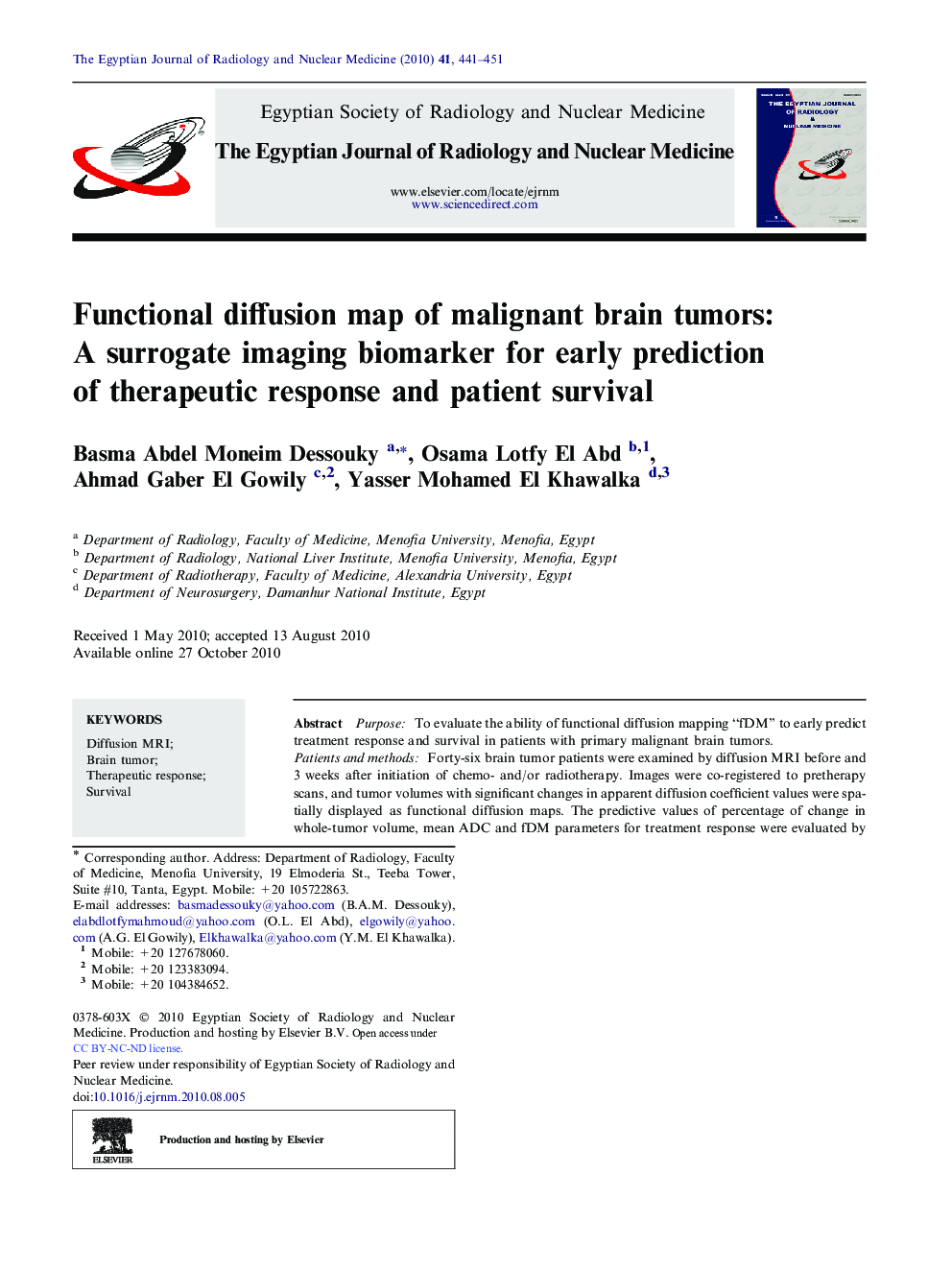| Article ID | Journal | Published Year | Pages | File Type |
|---|---|---|---|---|
| 4224768 | The Egyptian Journal of Radiology and Nuclear Medicine | 2010 | 11 Pages |
PurposeTo evaluate the ability of functional diffusion mapping “fDM” to predict early treatment response and survival in patients with primary malignant brain tumors.Patients and methodsForty-six brain tumor patients were examined by diffusion MRI before and 3 weeks after initiation of chemo- and/or radiotherapy. Images were co-registered to pretherapy scans, and tumor volumes with significant changes in apparent diffusion coefficient values were spatially displayed as functional diffusion maps. The predictive values of percentage of change in whole-tumor volume, mean ADC and fDM parameters for treatment response were evaluated by their correlation with the standard clinico-radiologic response criteria and overall survival of the two response groups was determined.ResultsOf the analyzed 46 brain tumors, 21 tumors were responding and 25 were stable/non-responding. At 3 weeks after initiation of therapy, the percentage of tumor volume with significant increase in diffusion (VR; red voxels) was the strongest predictor of treatment response than the changes in whole-tumor volume and mean ADC values determined at the same time point as compared to their pretherapy values. VR threshold of 14.5% at 3 weeks had sensitivity, specificity, positive and negative predictive values of 100% for all differentiating responding from stable/non-responding tumors. Overall survival in stable/non-responding group was shorter than in the responding group (8.7 versus 35.6 months; ∗∗P < 0.001).ConclusionThe use of fDM provided an early and direct surrogate marker for predicting treatment response and patient survival in patients with malignant brain tumor.
